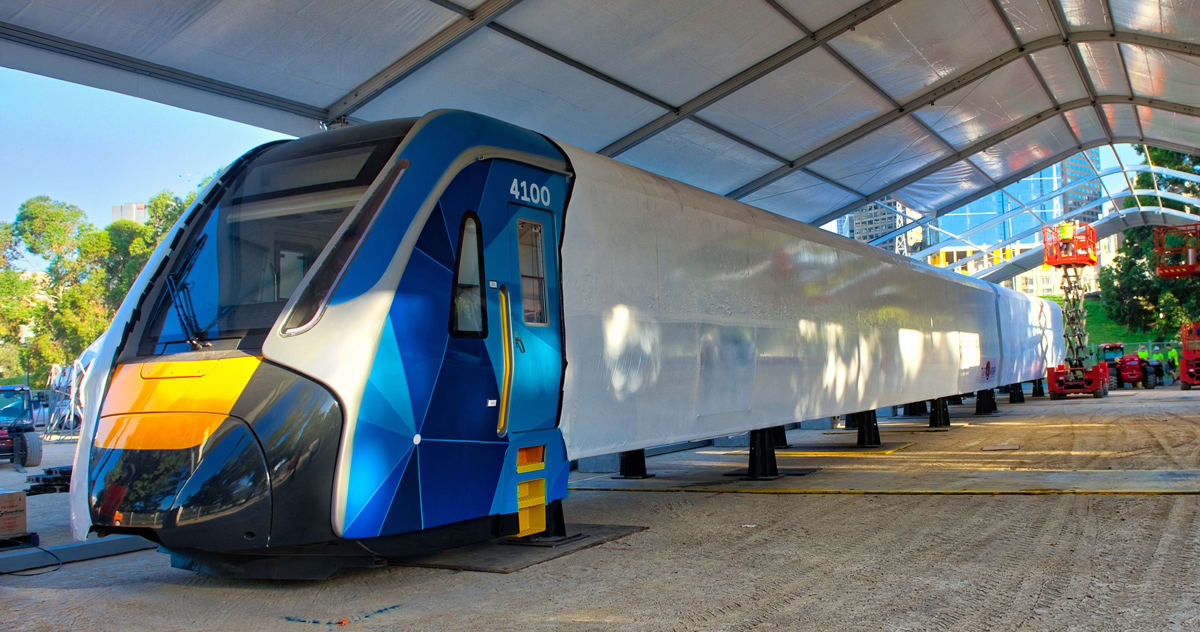When Metro 1 opens, will punctuality figures become redundant?
Last week Public Transport Victoria unleashed a torrent of data concerning punctuality and cancellation figures for Melbourne's train network with the Frankston line bestowed with the unfortunate title of train line with the most cancellations.
I understand the public interest value of this data - it's a way of holding operators (and the government) to account - however I wonder about the efficacy of this going forward, given the stated aim of Metro 1 to operate on a turn up and go basis.
'Turn up and go' (TUAG) is a concise way to convey: trains will run that frequently so you don't need to structure your journey around a timetable, you need only rock up to a station and a train will arrive relatively quickly.
It is the rolled-gold standard of train operations in cities and in some cases Melburnians can do it already with how our network bunches lines at certain points which in turn creates high frequency of service.
Between South Yarra and the City, between Burnley and the City, between Footscray and the city, between Clifton Hill and the city - these are the areas where it's very much possible to simply turn up and go outside of peaks and on weekends under existing operational timetables.
However, as stated on many occasions by the state government, the entire Pakenham/Cranbourne-Sunbury line - as they claim - will become a TUAG line - meaning frequencies are set to increase and given the lack of any other clarifying statements to the contrary, we are lead to believe frequencies will be better than they are now in off-peak and weekend periods.
We know that as part of the Melbourne Metro Tunnel (Metro 1) project that there are several 'wider network enhancements' budgeted for which will see stations like Westall, West Footscray, Essendon and Cheltenham have new train turn-back facilities either built as new or upgraded to allow for shorter runs on their respective lines, thus increasing frequencies in the parts of the network which have or are expected to shoulder a heavier load.
But will measuring punctuality or cancellations mean much when the government wants us to effectively ditch living our lives by a train timetable? Should it?
The new cross-town line created by the Metro 1 tunnel will have a dedicated train fleet which, from the outset, will be able to carry more passengers when you compare one trainset to any other type running on the network.
Likewise, when the Metro 1 opens for passengers, these former 'City Loop' lines will only have to interact with 1-2 Vline trains in any given hour (Bendigo Vline on the Sunbury side, Gippsland Vline on the Pakenham side) as well as the odd freight train, presumably only outside peak hours.
This contrasts with their respective & current interaction with the Frankston (and Sandringham on weekends) on the Pakenham/Cranbourne side and the Craigieburn & Upfield lines on the Sunbury side on top of the Vline and freight services.
Under the operational regime once Metro 1 opens and the fleet which operates Pakenham, Cranbourne and Sunbury lines is transferred to other lines, the Frankston, Craigieburn, Upfield, Werribee, Williamstown and Sandringham lines will all be in the same boat: either less interaction with other train lines or outright operational changes.
In short, the infrastructure will support having a higher frequency of timetable updates and will allow trains on those other lines to run more frequently - the Metro 1 project doesn't just selectively benefit two narrow corridors of Melbourne's Metropolitan area, it actually benefits the majority of Melbourne's rail lines.
For instance, the Werribee/Williamstown line, according to the PTV's network development plan from 2013, will join in gunzel matrimony, the Frankston line will get sole use of the existing loop tunnel that it currently shares with Pakenham/Cranbourne and the Craigieburn and Upfield lines and likewise, Craigieburn and Upfield services will - naturally - not have to fight for space in the current loop tunnel that it shares with Sunbury.
All of them are going to see significant peak increases therefore according to the 2013 network development plan, in peak times at least, and the TUAG-factor on these lines will be enhanced just like the Metro 1 line.
So taking into account all of the above, should the train operator of the day be judged based on the average frequency it provides on specific lines?
